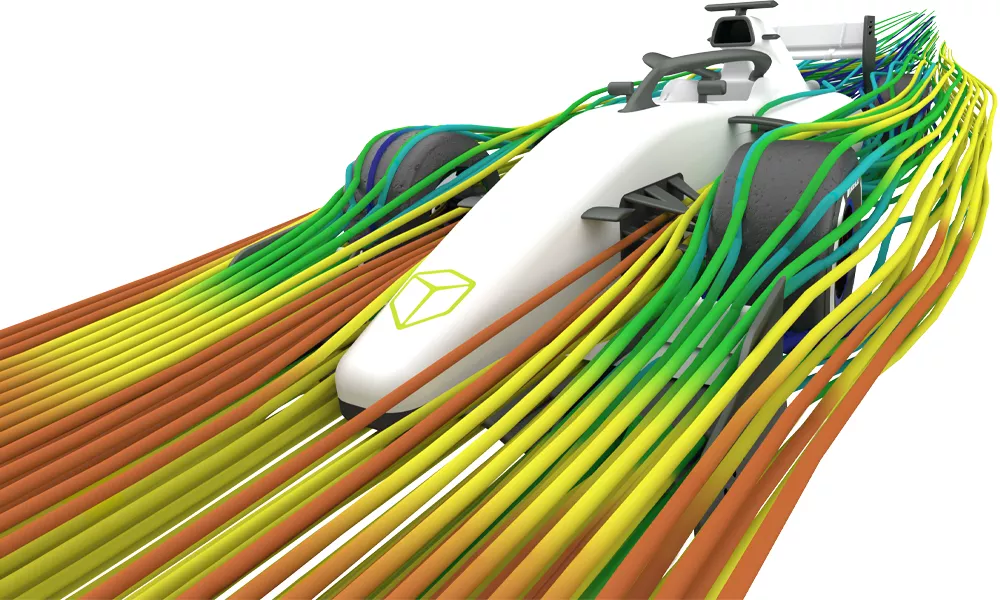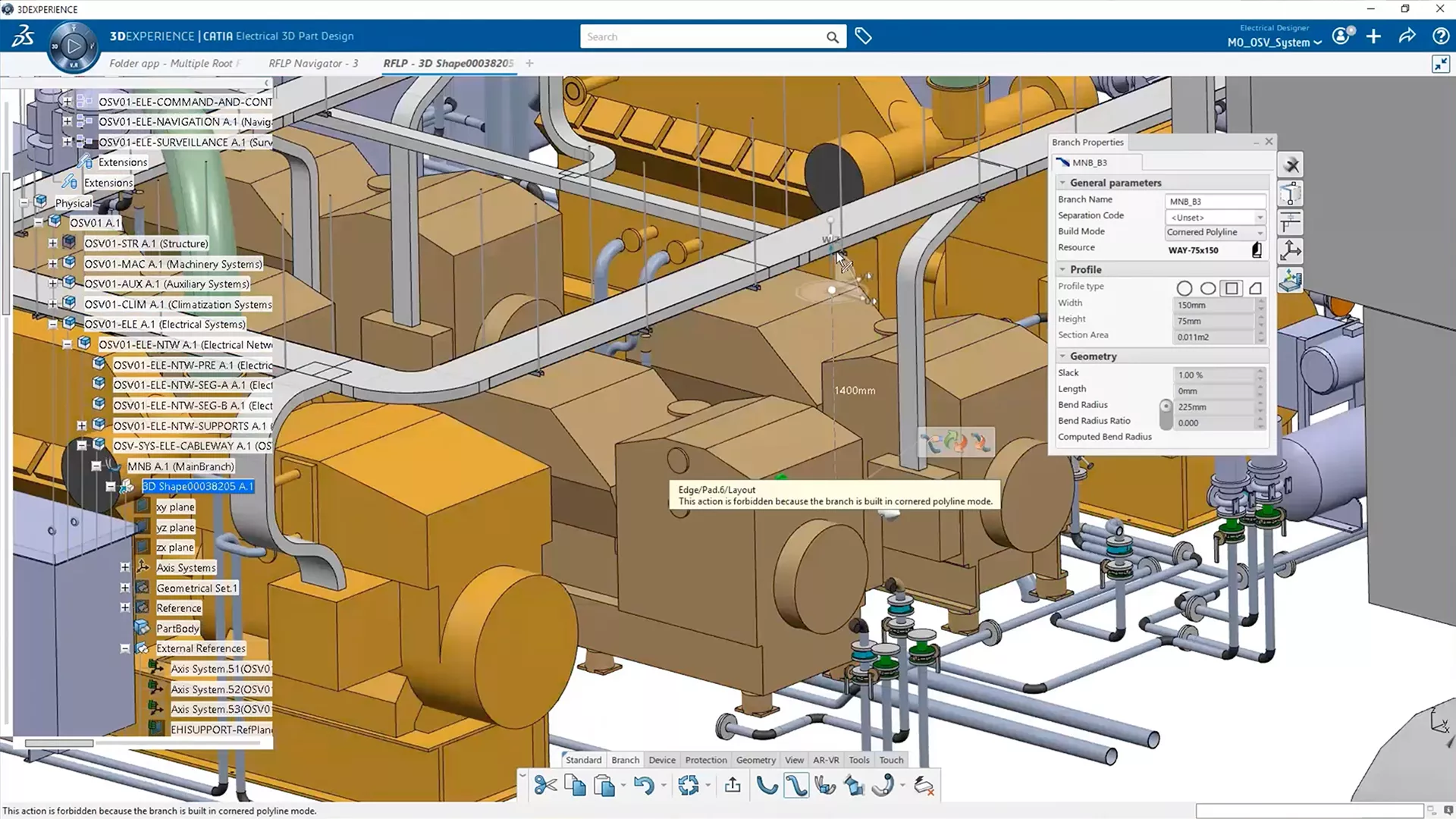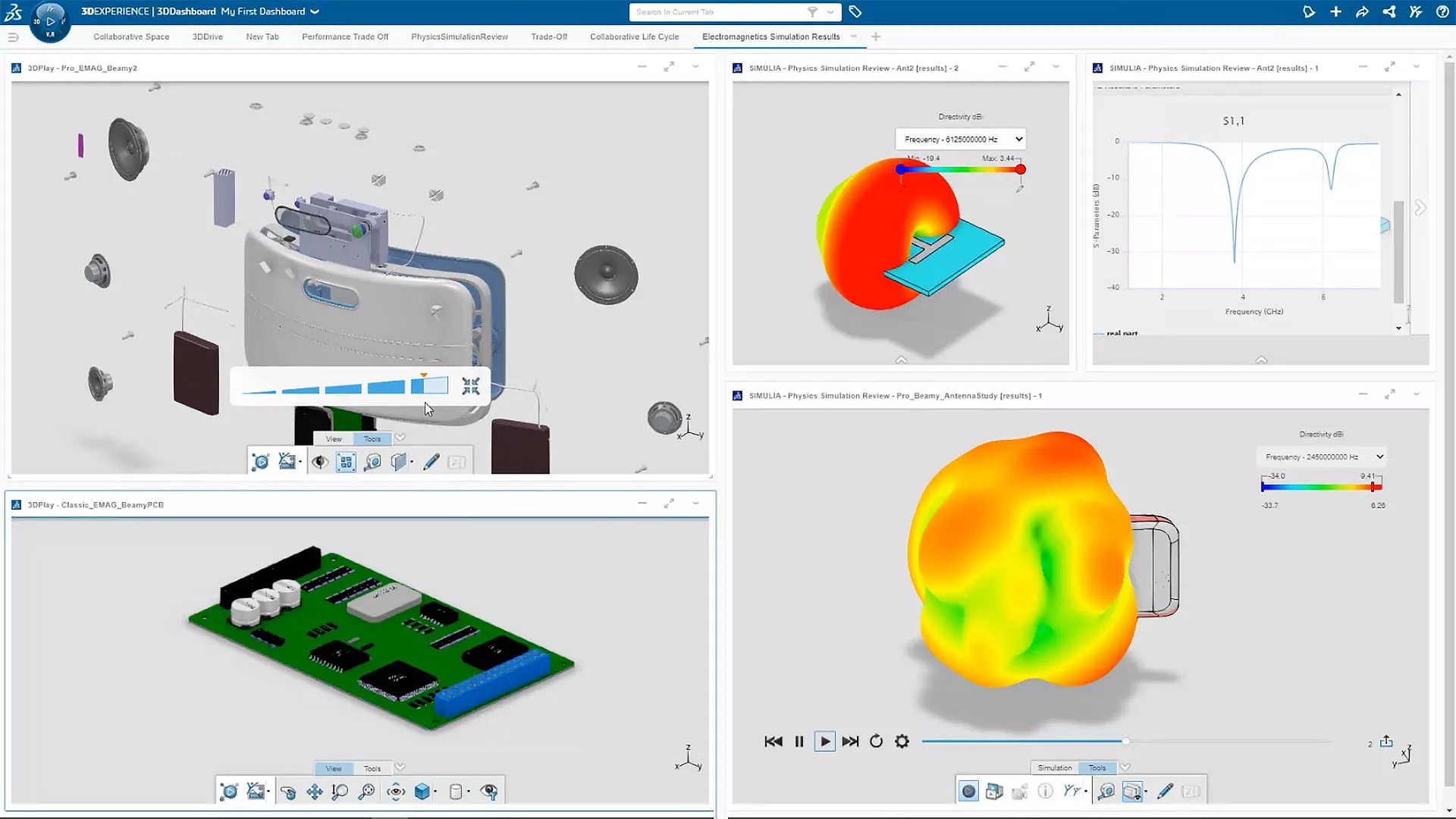CATIA Magic
The Cloud-Enabled MBSE Portfolio Powered by Cameo & MagicDraw
Product innovation is rapidly progressing beyond the days of siloed teams and technology stacks. To be competitive in the global market, you can’t waste time and money on the preventable pitfalls of document-based systems engineering. These pitfalls of miscommunication, insufficient visibility, difficult coordination, and poor traceability result in a longer development cycle for lower quality products.
This Is How We Do Complex Systems Engineering.
Take control of complexity with model-based systems engineering (or MBSE). CATIA Magic MBSE solutions, powered by Cameo and MagicDraw, provide a seamless collaborative approach to systems engineering, based on always-up-to-date models accessible to all stakeholders.
With MBSE on-premise, on private cloud, or on public cloud, you can improve cross-function collaboration, engineering decision making, end-to-end traceability, and, ultimately, quality and time to market.
If you're an aerospace or defense supplier looking to match traditional Cameo at a customer, visit our No Magic Cameo page.
Benefits of MBSE with CATIA Magic
![]()
Increased Efficiency
By adopting CATIA Magic and MBSE, companies can experience a significant boost in efficiency. The front-loaded model-centric approach streamlines processes, reduces errors, improves coordination, and provides traceability, ultimately saving time and resources later on in development.
![]()
Improved Collaboration
Break down communication barriers within your team. CATIA Magic facilitates collaboration by providing a unified platform where otherwise-isolated engineers, designers, and stakeholders can integrate their work into a model of the functional whole.
The multidisciplinary model stays in-sync with development so that reliable validation of requirements and performance can be done early and virtually.
![]()
Enhanced Decision Making
Make well-informed decisions throughout the project life cycle. The integrated simulations, analyses, and traceability features empower you to assess the impact of decisions, ensuring that you stay on track and in compliance with project requirements.
![]()
Future-Proof Your Designs
CATIA Magic and MBSE enable you to create flexible and adaptable designs. Future changes and upgrades become more manageable as the system models capture the intricacies of the “what” and “why” of your design, making it easier to modify and scale as needed.
eBook
Model-based Systems Engineering: The Key to On-Time Product Launches
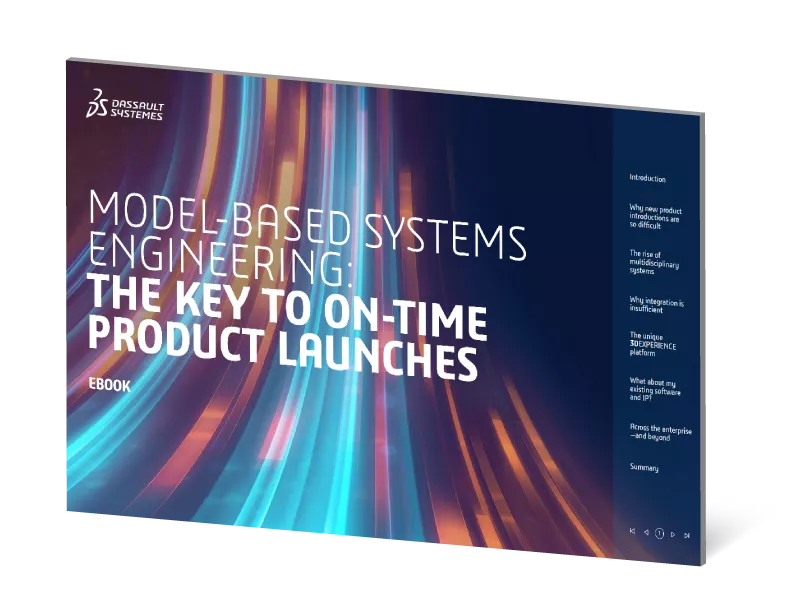
How do you improve your product development processes? Read this eBook for ways to improve complex systems development. (Hint: Integration is not the answer.)
What if the entire team could collaborate using one 3D model as you develop your product? Learn the benefits of using industry-leading engineering and simulation software with a platform approach. With this approach, leading companies develop their products in a virtual environment to verify fit, form, and function to eliminate errors early in the development cycle.
Discover two case studies as well: Bosch Car Multimedia & Industrial equipment manufacturer CLAAS.
Key Features of CATIA Magic
Unified Collaboration
CATIA Magic provides a unified collaboration environment, where multidisciplinary teams seamlessly work together. MBSE facilitates communication by creating a common language for all stakeholders, eliminating silos, and enhancing cross-disciplinary cooperation.
Model-Centric Approach
CATIA Magic emphasizes using models as the central hub for information, enabling a more visual and intuitive representation of complex systems. This approach enhances understanding, reduces errors, and accelerates decision-making processes.
Comprehensive System Modeling
Create holistic and detailed models of your systems, covering everything from requirements and architecture to behavior and parametric analysis. With CATIA Magic, you can model the entire system life cycle, ensuring a comprehensive understanding and control over your project.
Simulations and Analysis
Unleash the power of simulations and analysis directly within your models. Validate system behavior, analyze performance, and ensure compliance with industry standards. CATIA Magic's integrated simulation capabilities provide real-time insights, enabling you to make informed decisions at every stage of the development process.
Traceability and Impact Analysis
Maintain complete traceability across your projects. CATIA Magic allows you to trace requirements, changes, and dependencies, ensuring transparency and accountability. Conduct impact analyses effortlessly to understand the repercussions of any modification on the entire system.
CATIA Magic Packages
-
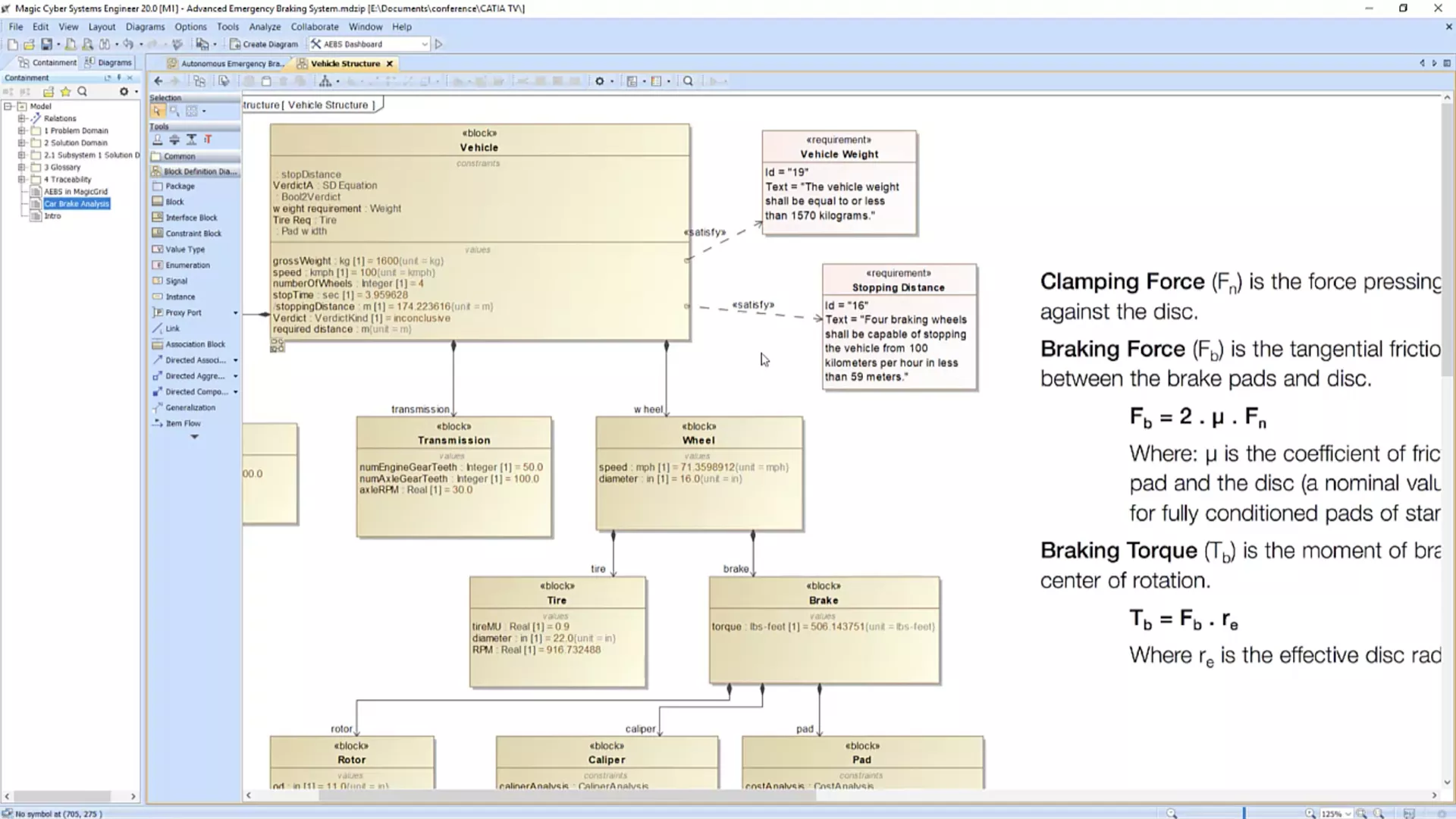
Magic Software Architect
-
Magic Software Architect is an end-to-end MagicDraw-based software toolkit for the design, modeling, and analysis of complex object-oriented systems and database architectures.
It is versatile, adaptable, and industry standards-compliant, built to fit any company’s approach to software development. It easily collaborates with leading IDE, requirements management, testing, estimation, model-driven development, and database solutions, creating standards-compliant UML models and diagrams.
-
Key features:
- Industry’s best code engineering mechanism, with full round-trip support for Java, C++, C#, MSIL & COBRA IDL
- Code engineering and diagramming functionality in CORBA IDL, WSDL & XML schema
- Structure retrieval via JDBC
- Database schema modeling
- Two-way model transformation between Platform Independent (PIM) & Platform Specific (PSM) Models
- DDL generation
- Reverse engineering
- Full access to the next-generation WebPortal report: an interactive web view of your model
- Intuitive quick start
- Support for UML 2 metamodel
- Latest XMI standard for data storage
- Open API for custom integrationsTypically used by:
- Programmers
- Software analysts
- Business analysts
- Quality assurance engineers
- Documentation writers -
-

Magic Cyber Systems Engineer
-
Magic Cyber Systems Engineer is the MagicDraw-based toolkit for defining system behavior, structure, and requirements. In the cloud collaborative environment, it’s easier than ever to understand the problem from all angles and make decisions that serve the requirements of every stakeholder.
-
Key features:
- Define, track, and visualize all aspects of systems
- Standards-compliant SysML models and diagrams
- Model and manage requirements
- Engineering analysis for evaluation and verification
- Continuous model consistency checks
- Progress tracking with metrics
- Generate documents, images, and web views
- Safety and reliability analysis
- Manage models in remote repositories and store as standard XMI files (optional)
- Add simulation with Magic Model Analyst (optional)Typically used by:
- System architects
- Function architects -
-
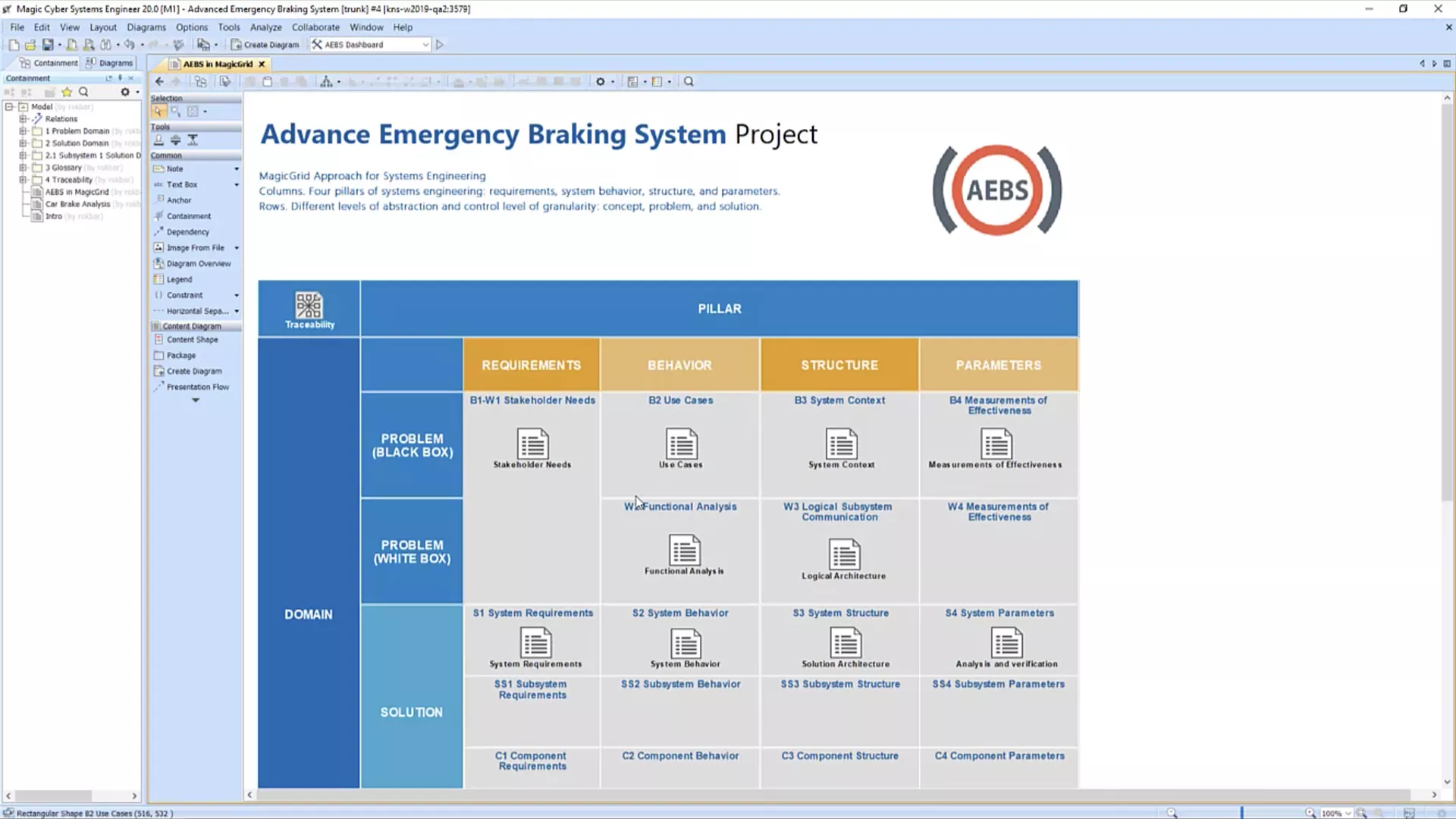
Magic System of Systems Architect
-
Magic System of Systems Architect is a comprehensive MagicDraw-based solution for defining the operational missions of large-scale distributed systems according to the Unified Architecture Framework standard.
-
Key features:
- Create, analyze, and manage various aspects of enterprise architecture
- Standards-compliant DoDAF 2.0, MODAF, NAF 3, NAF 4, and UAF 1.1
- Standards-compliant SysML models and diagrams
- Model and manage requirements
- Concept modeling
- Business process modeling
- Safety & reliability analysis
- Requirements managementTypically used by:
- System of systems architects
- Mission engineers -
-
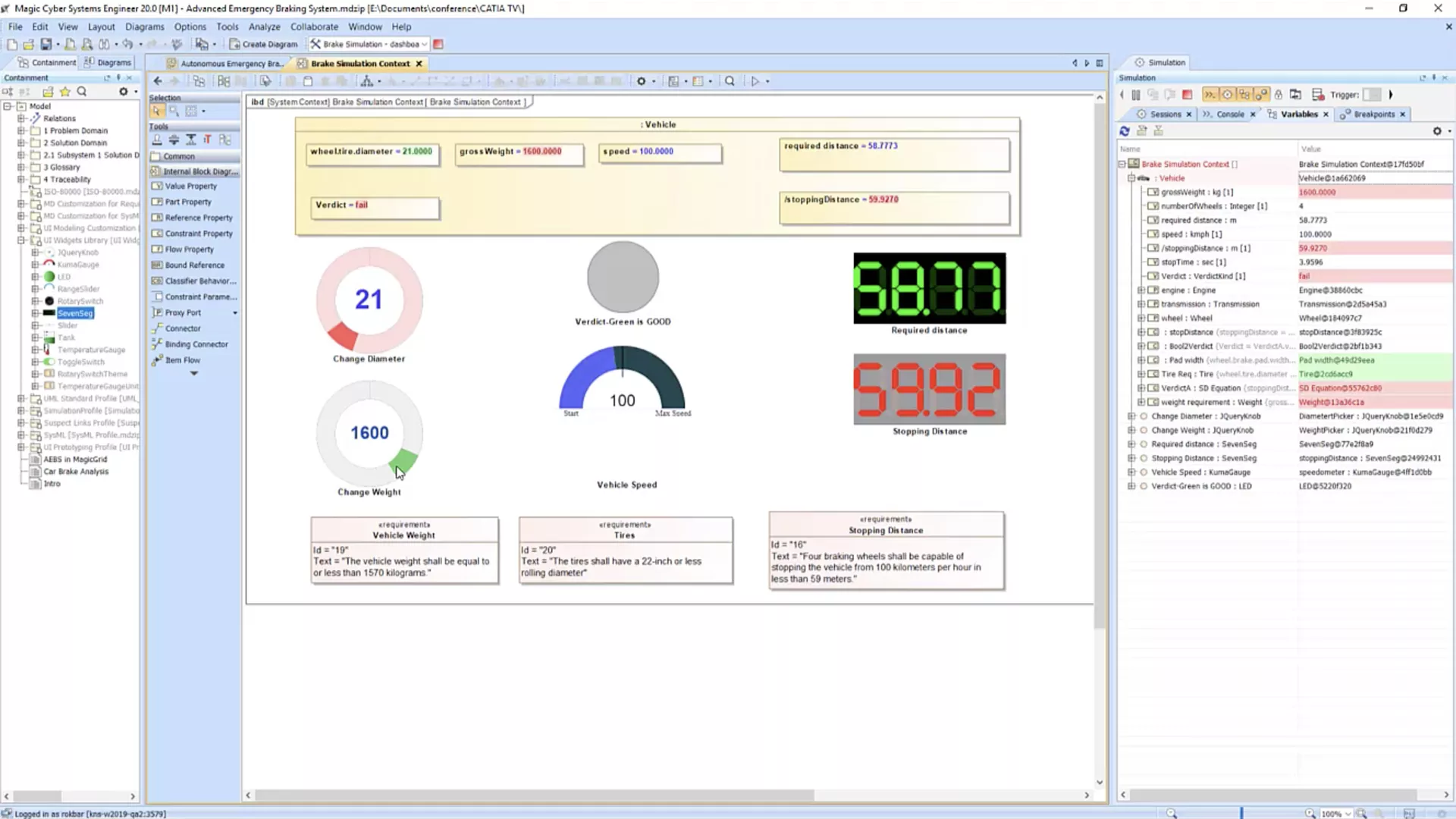
Magic Model Analyst
- Test system models – with UI mock-ups – against user interaction, predefined test data and execution scenarios, and requirements. Discover and resolve design errors before prototyping, when it is cheaper and easier to do so.
-
Key features:
- Model execution framework based on OMG fUML and W3C SCXML standards
- Simulation of all behavior diagrams
- Co-simulation out-of-the-box
- MatLab, Simulink, FMU 2.0, Mathematica, and OpenModelica integrations
- Monte Carlo simulation
- Scripting with JavaScript, Ruby, Python, Beanshell, Groovy, and built-in math
- Model completeness & correctness
- GAP analysis
- Change impact
- Coverage
- TraceabilityTypically used by:
- System architects
- System of systems architects
- Quality assurance engineers -
-
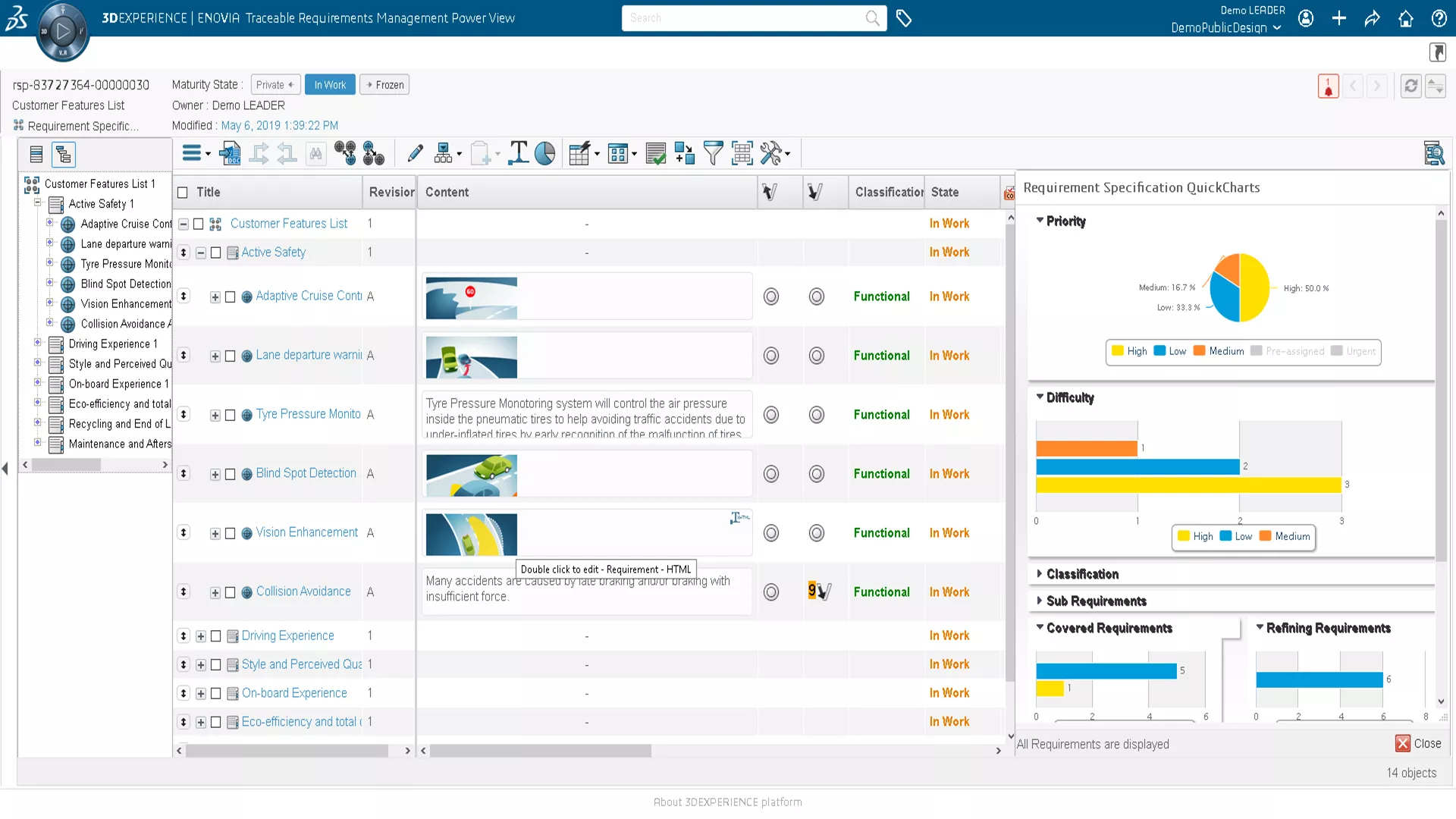
Requirements Engineer
- Manage the global requirements gathering process and translate into requirements specifications for new products.
-
Key features:
- Global, centralized repository of customer needs, the product requirements, and configurations that satisfy them
- A data single source with the tools to manage history, change, traceability, discussions, and baselines
- Requirements analysis for review, assessment, prioritization, derivation, and balance of customer needs and development resources
- Enables system interaction modeling for impact and trade-off analyses
- Available for CATIA Magic with 3DEXPERIENCE CLOUD PDMTypically used by:
- Systems engineers
- Requirements managers -
-
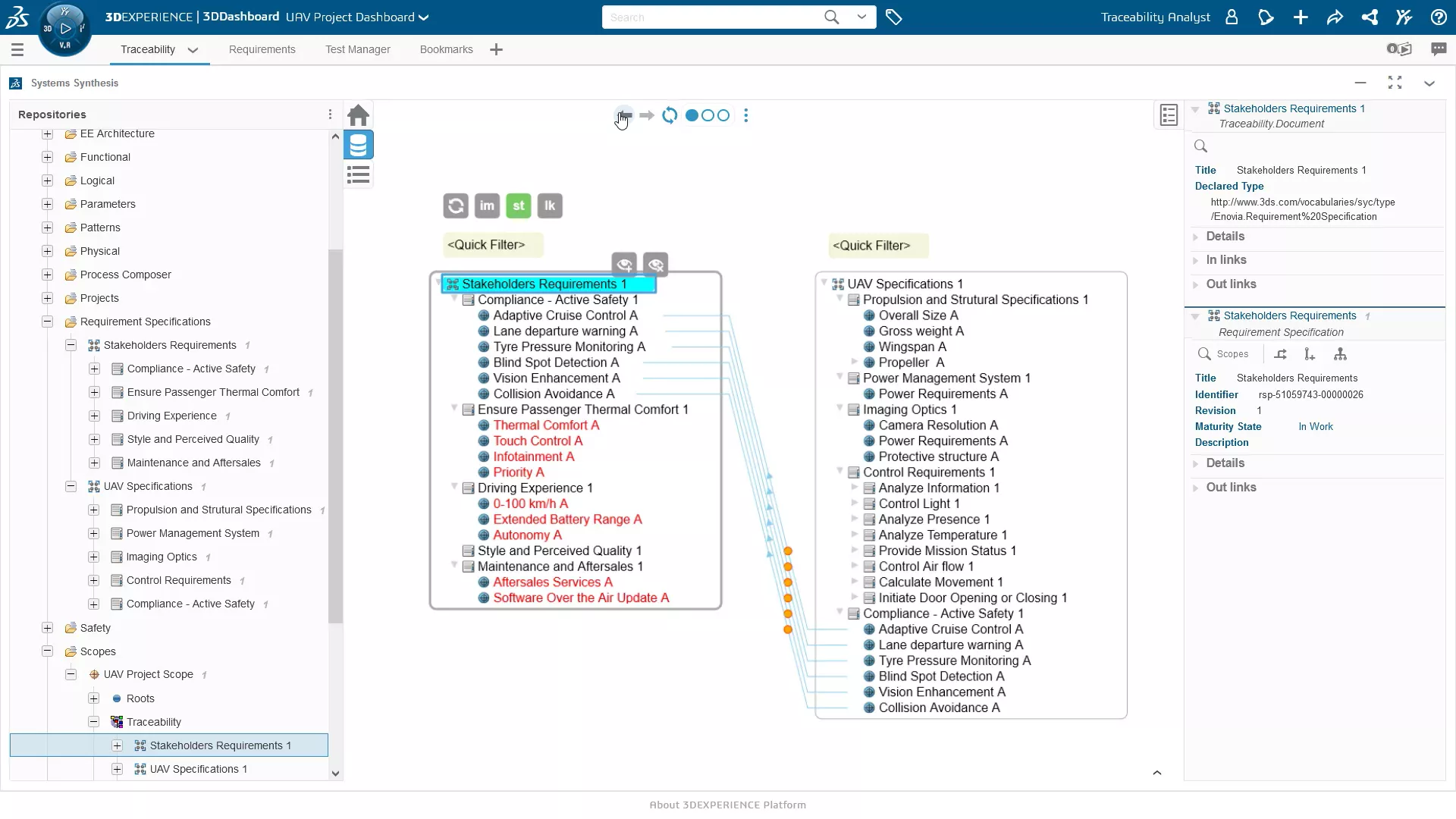
Systems Traceability Analyst
- Ensures holistic traceability and collaboration among project stakeholders and across system models.
-
Key features:
- Seamlessness across diverse sources of models and data
- Users can organize working scopes, navigate and preview, analyze traceability, and review and annotate
- Improved visibility, accessibility, and compatibility of systems models and data improves compliance and reveals engineering gaps
- Available for CATIA Magic with 3DEXPERIENCE CLOUD PDMTypically used by:
- Systems engineers
- Systems architects -
CATIA Magic Data Management Options
-
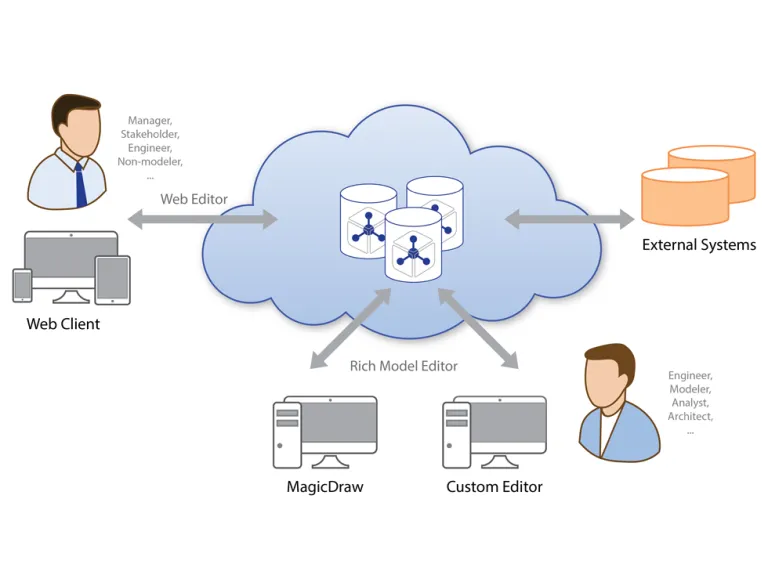
Magic Collaboration Studio
-
An independent data storage and management solution for CATIA Magic, Magic Collaboration Studio is made for handling large volumes of MBSE data. It enables system-of-systems development across distributed teams, using MBSE-specific management and collaboration functionality.
-
Key features:
- Model storage, versioning, configurations, analysis, and access control
- Concurrent work on the same model
- Data, change and project management tools
- Any stakeholder can review and edit models using the web client (optional)
- Third-party integrations and customization with client API, RESTful API, command line interface, and Open Services for Lifecycle Collaboration (OSLC)
- Web-based admin tools
- Robust security feature set
- Deploy on local hardware or cloud provider
- Scalable performanceTypically used by:
- All stakeholders -
-
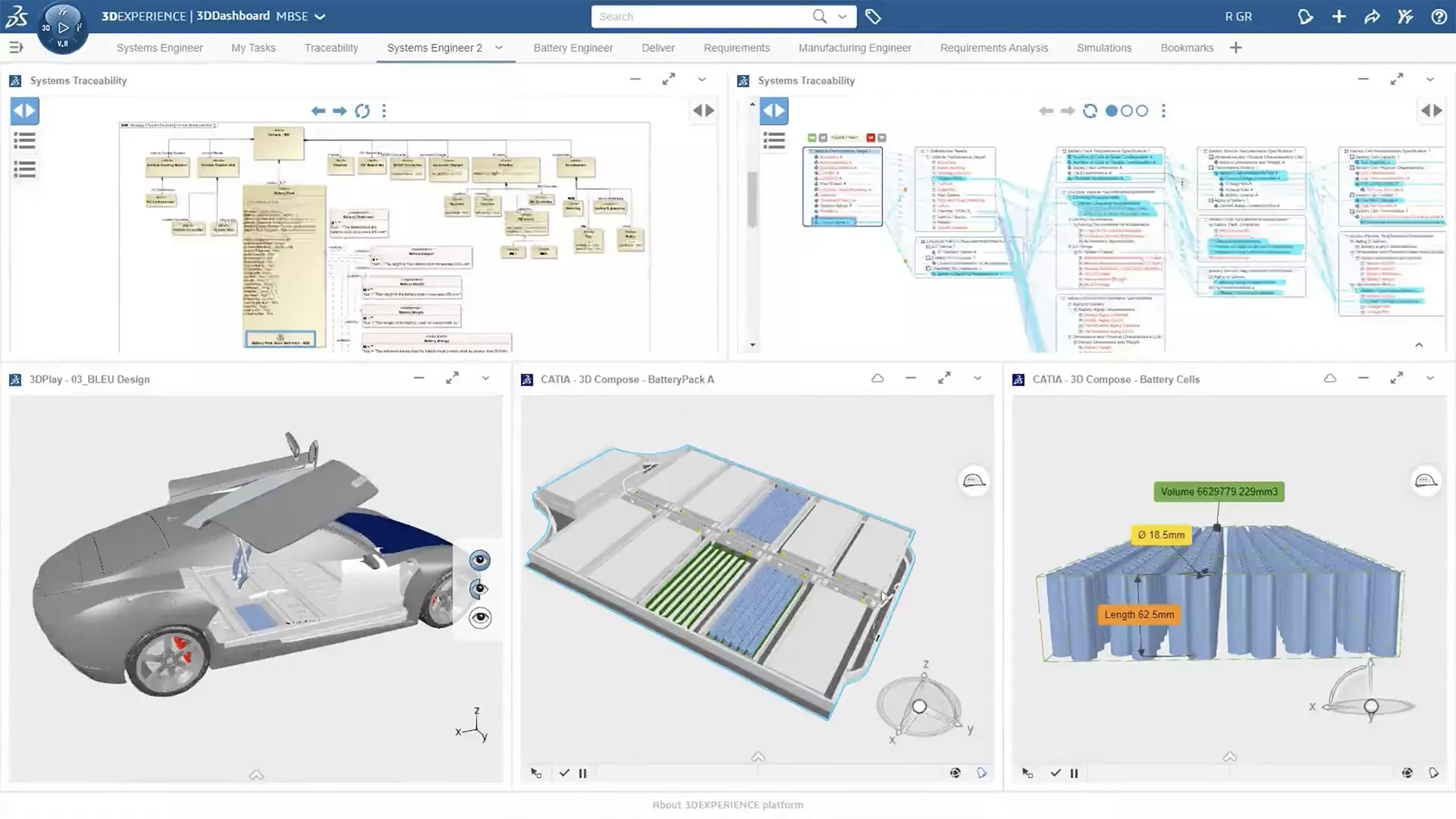
3DEXPERIENCE CLOUD PDM with CATIA Magic
-
Instant, managed (or self-hosted) cloud PDM for your MBSE data. With this CATIA Magic add-on, users can save their system architecture and models to the 3DEXPERIENCE Platform for collaborative system-of-systems development.
Take advantage of this seamless integration for full visibility and traceability across all disciplines and functions, spanning the full company hierarchy.
-
Key features:
- Managed cloud PDM services that require no local hardware purchasing or IT staff (also deployable on private cloud)
- Feature-rich data and change management functionality, including concurrent work, revisions, configurations, and more
- Unified product data with design, simulation, manufacturing, and other departments
- Makes CATIA Magic data available to 3DEXPERIENCE-exclusive MBSE tools and other downstream processesTypically used by:
- All stakeholders -
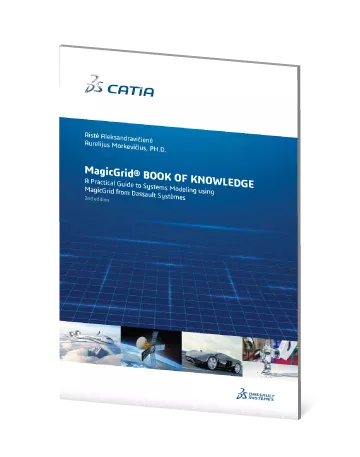
A Practical Guide to Systems Modeling
MagicGrid® BOOK OF KNOWLEDGe
The MagicGrid Book of Knowledge is a comprehensive guide to the CATIA MagicGrid framework to MBSE.
Illustrated using the easy-to-understand model of a real-world system, it is an answer to all the questions you may have, starting from “why” and ending with “how”, which few of today’s available sources of information can answer.
System of Systems
Architect
Cyber Systems
Engineer
Software
Architect
MagicDraw
UML
SysML/UML
Requirements Modeler
Safety & Reliability Analyzer
CSV and Excel Import
Merge
AutoStyler
Simulation Toolkit
Systems Engineering
Systems of Systems, Mission Design
Data Modeler
Concept Modeler
BPMN/UAF/UPDM
CATIA Learning and Support
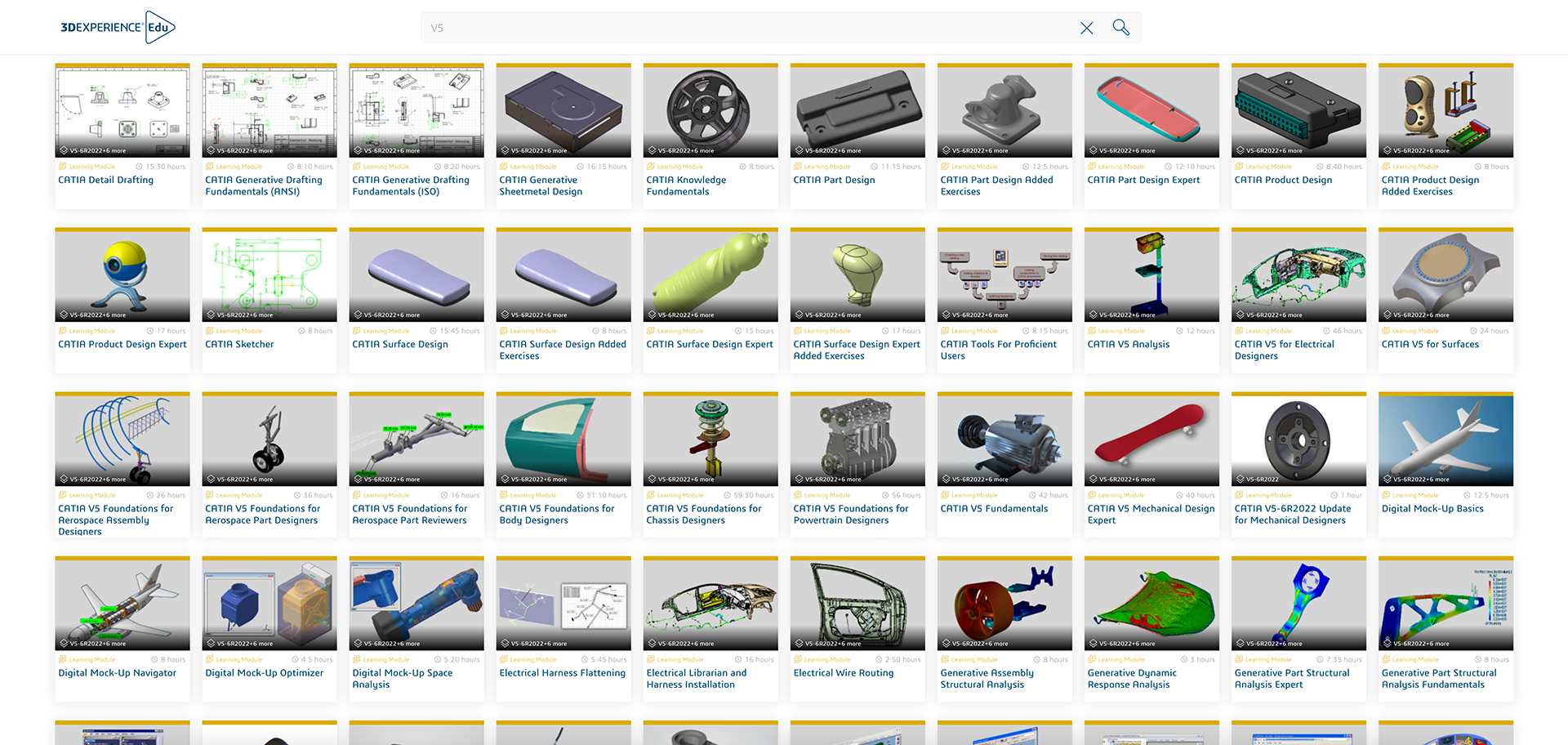
GoEngineer Learning Resources
CATIA is powerful software, so learning to make the most of it isn’t trivial. Thankfully, Dassault Systèmes and GoEngineer provide plenty of resources on the path to proficiency:
CATIA Webinar
Easing the SOLIDWORKS-to-CATIA-V5 Transition
SOLIDWORKS users transitioning to CATIA V5 face unique challenges. In this webinar, SOLIDWORKS & CATIA expert Tim Ramos will illustrate the key differences between the two packages and show how to navigate them effectively.
We'll discuss some typical pain points that include:
- Interface - navigation, setup, and basics
- Part Design - sketching, part manipulation, rollback
- Assembly Design - placing and moving parts, basic mechanisms, clash detection
More Product Development Solutions for You
Additional Resources
Take Advantage of GoEngineer’s Extensive Knowledge Base and Resources

Find a Solution
Our robust Knowledge Base contains over 12,000 resources to help answer your product design questions. From basic CAD questions to in-depth guides and tutorials, find your solution here. Find a Solution

PROFESSIONAL TRAINING
Improve your skills with professional training and certifications in SOLIDWORKS, CAM, 3D Printing, and 3D Scanning offered four ways: self-paced, online, on-site, or in-classroom. Certified Training Courses

BLOG
#1 Technical Resource Worldwide - Right at your fingertips. Search or browse through hundreds of SOLIDWORKS tips & tricks, additive manufacturing product developments, announcements, how-to guides, and tutorials. Blog

YouTube Channel
Our YouTube channel hosts hundreds of educational tutorials, product demonstrations, recorded webinars, and best practices for all of our products and services. GoEngineer's YouTube Channel

ONLINE STORE
Order 3D printing materials and consumables, enroll in SOLIDWORKS training classes, and buy official GoEngineer gear directly from our online store. Online Store
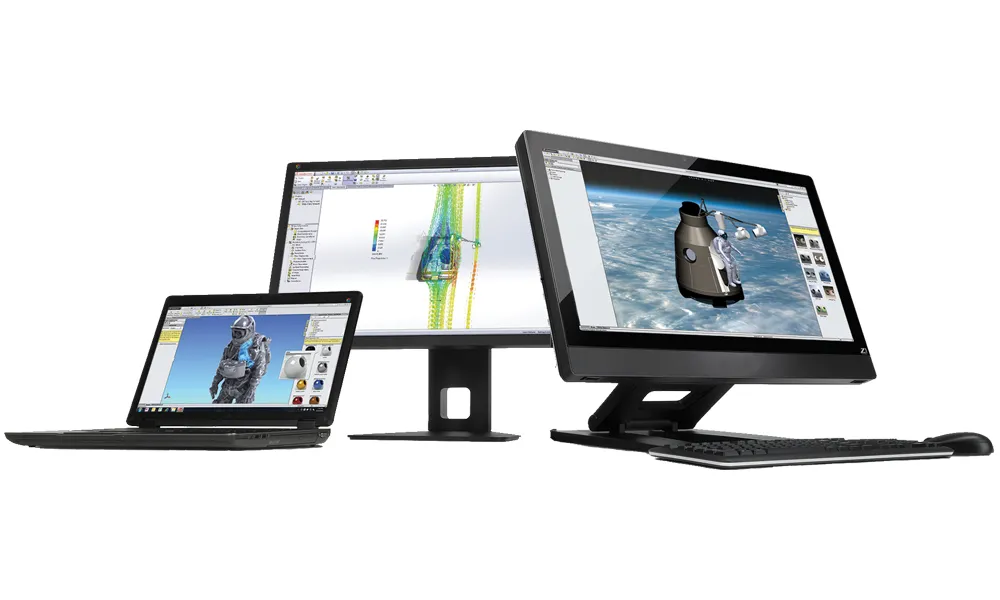
WEBINARS
Our engineering webinars are hosted by some of the top experts in the industry. They are always recorded, always free, and always offer a live Q&A. WEBINARS
3D Printing Services
Need to 3D print a part? Our Additive Manufacturing experts will 3D print your part and deliver it to you using the latest technology on one of our professional FDM, PolyJet and SL 3D printers. 3D Printing Services